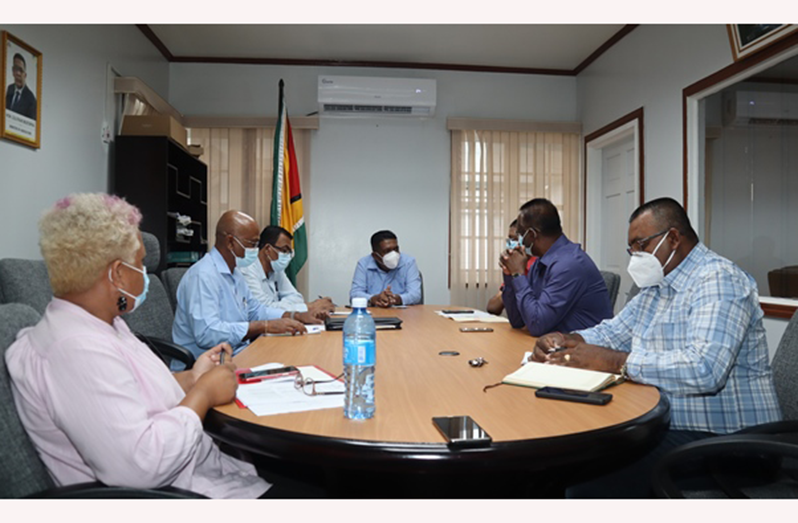AMID complaints of high levels of damaged rice grains, the Ministry of Agriculture has undertaken to intensify data collection ahead of the “second crop,” which usually commences in May/August.
The ministry’s commitment to enhance data collection follows a recent meeting among Minister of Agriculture, Zulfikar Mustapha, a team from the Guyana Rice Development Board (GRDB) and the Chief Executive Officer (CEO) of Nand Persaud and Company Limited, Mohindra Persaud.
During their discussion, which was centred on the progress of the ongoing first crop, Persaud said inclement weather, among other things, has resulted in high levels of “damaged grain.”
“This crop, the damages keep going up every day. The reason for that is the rain is falling inconsistently. The workers are not cooperating fully with the farmers and the work is getting harder in some instances.
“The report that comes out about damaged grains is not necessarily true. We get much more damage than that. One of the things people have to understand is when you harvest paddy, the combine equips itself to remove a lot of damaged grains. Using our lab to determine the amount of damage grain doesn’t reflect how much the industry has – it’s to show how much we have on record for our purposes,” Persaud said.
Chief Scientist at the Guyana Rice Development Board (GRDB), Dr. Mahendra Persaud, explained that their reports do not represent an exact number but rather a reference number.
“Whatever we report as damage, it isn’t an absolute number. It’s a reference number that is higher because you keep removing from the field and that is standard for all rice fields. In terms of determining the damaged grain ratio, we do it in a more detailed way in terms of our analysis.
“We take samples in the field and then the entomologist would boil them in sodium hydroxide. That makes the shell transparent so you would then be able to see the damage through the shell easily,” he said.
Minister Mustapha, in adding his bit, said that for GRDB’s report to reflect the true number of damaged grains farmers and millers are recording, the research arm of the board needs to increase its sample collection. He also instructed GRDB to intensify its data collection activities for the second crop of 2021.
“We have to start doing more of these analyses because those things affect the farmers and the production figures. So, I want the GRDB to start doing these studies regionally. Bring the extension arm up-to-date and trained to carry out these exercises. I want you to develop a programme and commence these exercises for the upcoming crop,” Minister Mustapha said.
He also said the Ministry, through the GRDB, will continue to work with farmers and millers to implement better systems at every stage of the crop.
DOUBLE PRODUCTION
Minister Mustapha added that with the government looking to double rice production by 2025, more emphasis will be placed on extension services, opening more lands, improving drainage and irrigation, and securing more lucrative markets for rice.
It is for this reason that Minister Mustapha advised rice farmers to use the available infrastructure with care during the harvesting period given the inclement weather.
“I know that reaping is currently at 50 per cent, but I want to urge our farmers to use these dams with some amount of discretion. We are currently experiencing a high intensity of rainfall and traversing these dams with heavy machinery will cause some amount of damage.
“Last year we spent millions of dollars to rehabilitate all of the dams and we will continue to do so, but I want to appeal to farmers to be mindful when transporting their paddy from the fields,” the minister said.



.jpg)










